The IEEE (Institute of Electrical and Electronics Engineers, Inc.) 5G Summit Conference was held at Shanghai Jiao Tong University’s (SJTU) Xuhui campus on July 28. Jointly organized with the 5G Tutorial (on July 27), the conference gathered top experts in the field of 5G wireless communications, including Zhiqin Wang, Vice President of China Academy of Information and Communications Technology, Dr. Chih-Lin I, Chief Scientist of China Mobile Research Institute, Professor Yi-Bing Lin of National Chiao-Tung University, Professor Norman C. Beaulieu of Beijing University of Posts and Telecommunications, Professor Sumit Roy of University of Washington, Professor Zhisheng Niu of Tsinghua University and others from Huawei, ZTE, China Mobile, Qualcomm, National Instruments, Shanghai Jiao Tong University, China University of Science and Technology, Beijing University of Science and Technology and other technical and academic institutions. The event also attracted an unprecedented turnout of audience from major domestic universities and enterprises. Attendees held in-depth study and discussions on the emerging technologies and standardization of 5G communication networks.
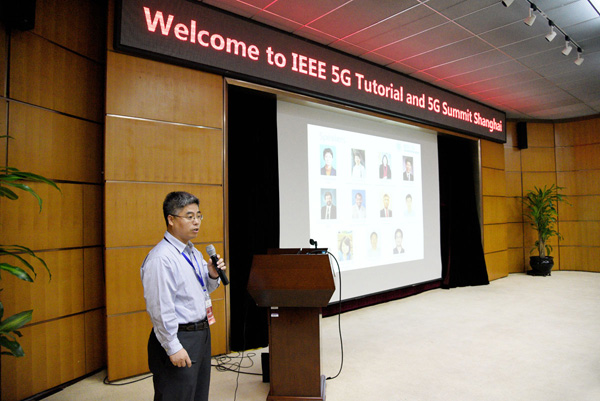 The IEEE 5G Summit Conference was presided over by Professor Xudong Wang of the Joint Institute, General Chair of this conference
The IEEE 5G Summit Conference was presided over by Professor Xudong Wang of the Joint Institute, General Chair of this conference
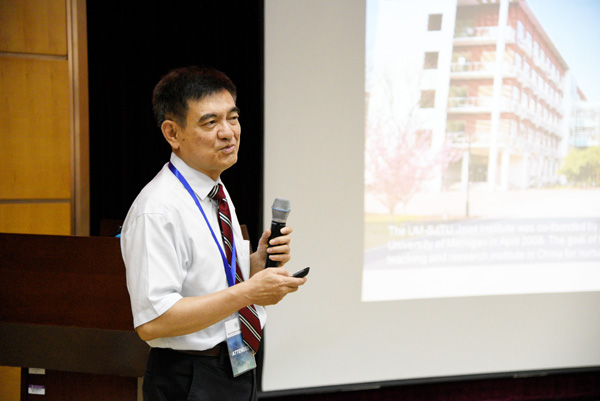
In the welcoming address, Chien-pin Chen, University of Michigan- SJTU Joint Institute (UM-SJTU JI) Associate Dean and Professor Tang Junyuan, expressed warm welcome and appreciation to the conference audience. He also provided a brief introduction to the Joint Institute.
The conference consists of two parts: keynote speeches and panel discussions, with detailed and in-depth exploration of the current research and development of 5G communications, the key technologies and the challenges.
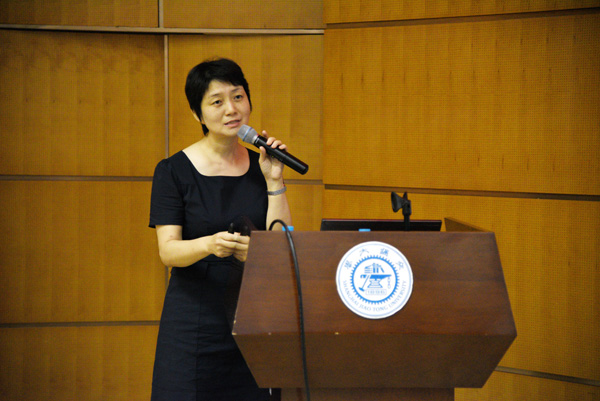
As the first speaker, Zhiqin Wang, Vice President of China Academy of Information and Communications Technology, presented the IMT-2020 5G Advance Group’s status on 5G communication research and field tests. She reported that China is making rapid and steady progress in the development and standardization of 5G communications; the industry and academia have been collaborating on large-scale on-site testing of wireless, network and other key technologies. Ms. Wang stressed that “Driven by innovation and based on field testing, the IMT-2020 Advance Group will lead the establishment of global 5G standards and ecosystems.”

Dr. Chih-Lin I, Chief Scientist of China Mobile Research Institute, introduced China Mobile’s deployment of 5G communication systems and envisioned the development trend of 5G technologies. Dr. I pointed out that the development of key 5G communication technologies will be open, flexible and software-defined, greatly shortening the deployment cycle, cutting deployment costs and providing strong support for emerging applications.
 Professor Yi-Bing Lin of National Chiao-Tung University, presenting “5G and IoT Make Better Smart Cities”
Professor Yi-Bing Lin of National Chiao-Tung University, presenting “5G and IoT Make Better Smart Cities”
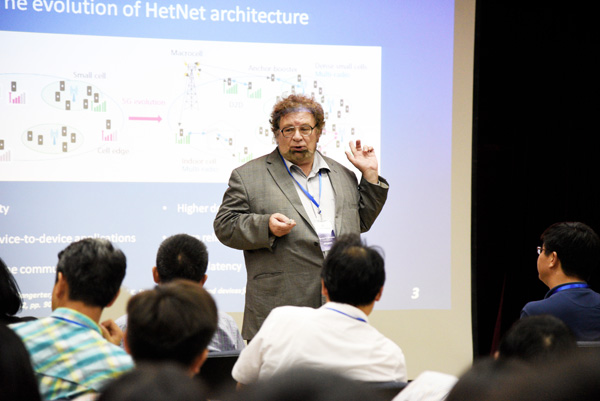 Professor Norman C. Beaulieu of Beijing University of Posts and Telecommunications, presenting “The Forgotten Bottleneck Limiting Performance in Wireless Systems with Interference”
Professor Norman C. Beaulieu of Beijing University of Posts and Telecommunications, presenting “The Forgotten Bottleneck Limiting Performance in Wireless Systems with Interference”
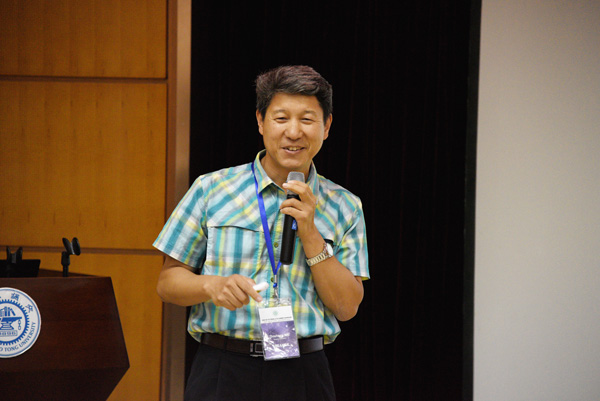 Professor Zhisheng Niu of Tsinghua University, presenting “Hyper5G: from Networking Hype to Hyper Networking”
Professor Zhisheng Niu of Tsinghua University, presenting “Hyper5G: from Networking Hype to Hyper Networking”
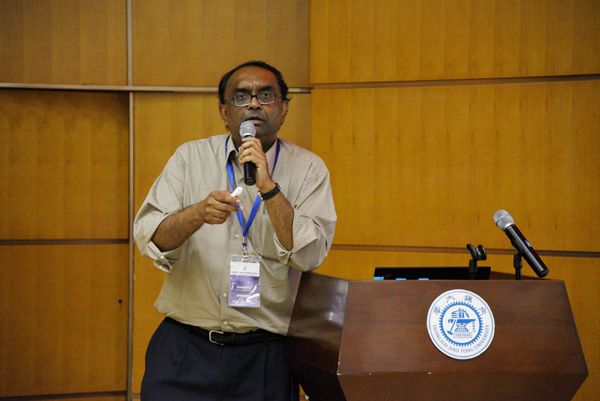 Professor Sumit Roy of University of Washington, presenting “An Overview of Spectrum Co-Existence Research at FUNLAB”
Professor Sumit Roy of University of Washington, presenting “An Overview of Spectrum Co-Existence Research at FUNLAB”
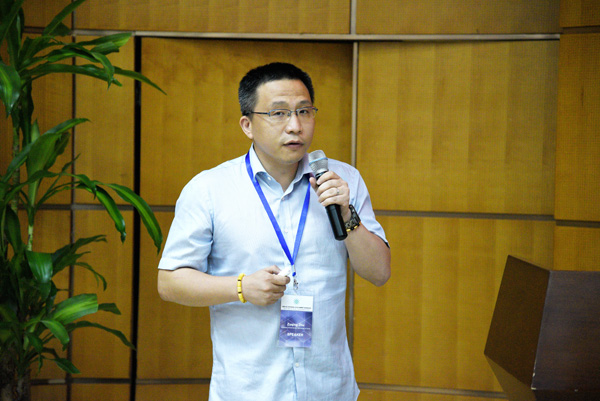 Professor Zuqing Zhu of China University of Science and Technology, presenting “Building 5G Networks with Network Softwarization”
Professor Zuqing Zhu of China University of Science and Technology, presenting “Building 5G Networks with Network Softwarization”
In order to achieve a variety of performance metrics in 5G, a lot of technical issues need to be addressed. The existence of these challenges makes the communications industry vibrant, attracting a large number of science and technology talents to join the research and development of 5G technologies. To provide great insights to the audience, Professor Yi-Bing Lin of National Chiao-Tung University, Professor Norman C. Beaulieu of Beijing University of Posts and Telecommunications, Professor Sumit Roy of University of Washington, Professor Zhisheng Niu of Tsinghua University and Professor Zuqing Zhu of China University of Science and Technology took turns presenting their ongoing research and visions on 5G technologies.
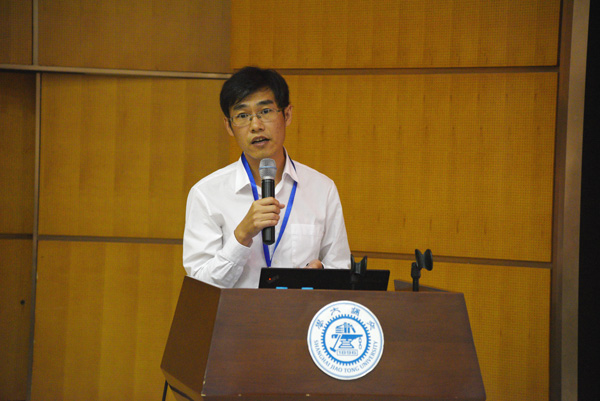 On behalf of China Unicom, Dr. Lei Xu shared Unicom’s technology prospects and research development in SDN and NFV
On behalf of China Unicom, Dr. Lei Xu shared Unicom’s technology prospects and research development in SDN and NFV
 Huawei representative Xiaoxiao Zheng, presenting “5G Challenges and Future Perspectives”
Huawei representative Xiaoxiao Zheng, presenting “5G Challenges and Future Perspectives”
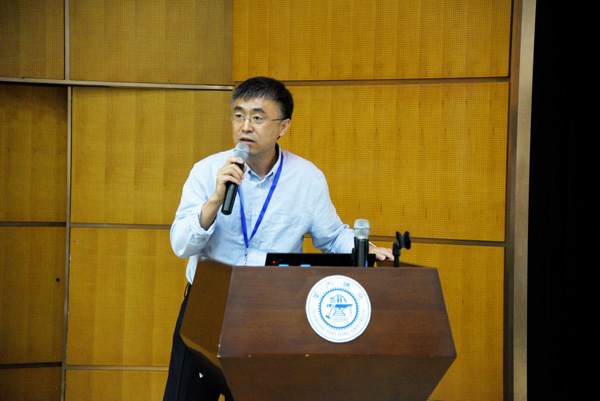 Qualcomm representative Dr. Yan Li, presenting “Making 5G NR a Reality”
Qualcomm representative Dr. Yan Li, presenting “Making 5G NR a Reality”
 Dr. Ahsan Aziz of National Instruments presented a keynote speech “Developing Proof of Concept Systems for 5G”
Dr. Ahsan Aziz of National Instruments presented a keynote speech “Developing Proof of Concept Systems for 5G”
In addition, China Unicom representative, Dr. Lei Xu, shared Unicom’s technology prospects and research development in SDN and NFV; representatives of Huawei, Qualcomm, National Instruments and other equipment manufacturers also presented progresses on their 5G research and development. These enterprises have invested a lot of talents and resources in the 5G R & D (Research and Development) and have made a lot of important achievements. Currently, they are vigorously promoting the standardization of 5G communication networks.
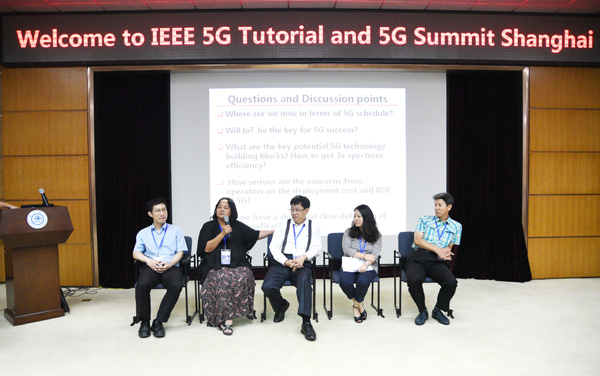 Professor Shugong Xu moderated the panel discussion on the future directions of 5G communications
Professor Shugong Xu moderated the panel discussion on the future directions of 5G communications
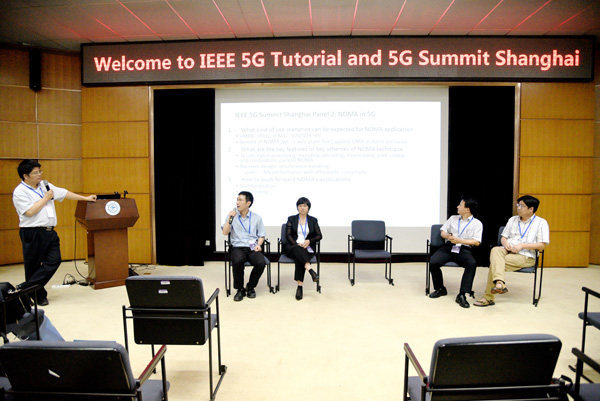 Professor Robert Qiu moderated the panel discussion on 5G NOMA technologies
Professor Robert Qiu moderated the panel discussion on 5G NOMA technologies
The two panel discussions alternated between the keynote speeches and addressed the future directions of 5G communications and the NOMA technology in 5G. The panelists include representatives from government, operators, equipment manufacturers and the academia. Both panels were actively participated by audience from both industry and academia. With continuous exploration and in-depth exchange of insightful ideas, the panelists depicted the development blueprints of 5G communications and brought up a lot of exciting research ideas.
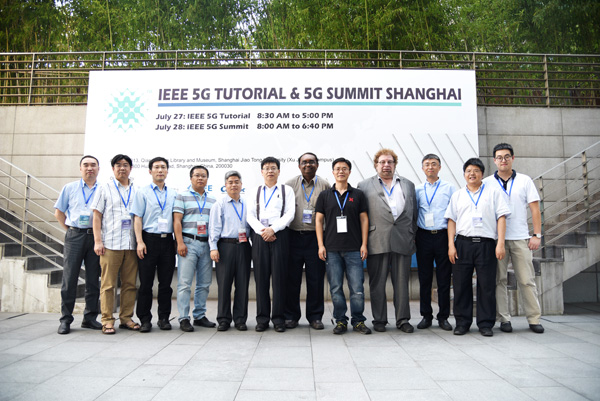
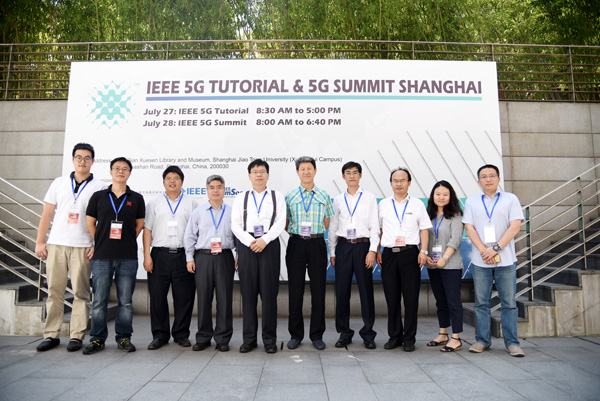 Group photos of the organizers and some speakers
Group photos of the organizers and some speakers
The success of this IEEE 5G Summit Conference would not be possible without the efforts of the Organizational Committee as well as the support of SJTU Wireless and Networking Laboratory and the Joint Institute. The conference was also sponsored by Huawei, ZTE and National Instruments.





